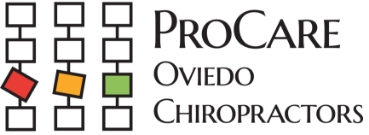Last week we began discussing a few different types of electrical stimulation used in physical therapy. This week, we will continue to discuss the other different types of e-stim. Continue reading today’s blog to learn more about what your physical therapist may use to treat your car accident injuries or troubled areas.
Neuromuscular electrical stimulation:
 Neuromuscular electrical stimulation, or NMES, uses an electrical current to contract a specific group of muscles or single muscle. Your physical therapist may place electrodes on the skin in multiple places, so he or she can recruit the appropriate muscle fibers. Physical therapists use electrical stimulation to improve the way your affected muscles contract.
Neuromuscular electrical stimulation, or NMES, uses an electrical current to contract a specific group of muscles or single muscle. Your physical therapist may place electrodes on the skin in multiple places, so he or she can recruit the appropriate muscle fibers. Physical therapists use electrical stimulation to improve the way your affected muscles contract.
The physical therapist can change the current setting, or strength, to allow for a forceful or gentle muscle contraction. In addition to increasing muscle function, the muscle contractions also promote blood flow to area that assists in the healing process. Neuromuscular electrical stimulation may also be used to decrease muscular spasm by artificially tiring your muscle in spasms. This allows the muscle to relax.
Russian stimulation is a form of electrical stimulation that can help you accomplish similar tasks as the neuromuscular electrical stimulation. Just like the neuromuscular electrical stimulation, it can help improve the way your muscles contract. The only difference is, Russian stimulation uses a different waveform that may be prove to be more comfortable for you.
Interferential current:
Interferential current, or IFC for short, is commonly used by physical therapists to reduce pain, decrease muscle spasm, or improve blood flow to multiple muscles or tissues. Often times, it is used to decrease pain in patient’s lower backs as well as decrease muscular spasm. Interferential current usually uses four electrodes in a criss cross pattern.
This criss cross pattern allows the currents to interfere with each other, thus giving it the interferential name. The criss cross pattern causing interference allows the physical therapist to use a higher intensity current. But it still leaves the patient feeling comfortable regardless of the intensity increase.
High voltage galvanic current:
High voltage galvanic current, or HVGC for short, uses high voltage and low-frequency electricity. Physical therapists use HVGC stimulation to penetrate deep into tissues. The high voltage galvanic current is used to relieve pain, improve blood flow, relieve muscle spasm, and improve joint mobility.
Doctors like patients to keep in mind that many e-stim treatments are passive. This means during the electrical stimulation therapy, patients don’t do anything. It is passive treatment. However, there are some forms such as neuromuscular electrical stimulation or Russian stimulation in which patients are required to be active while the e-stim is in use.
Remember, electrical stimulation is useful, but it should never be the only treatment you receive during physical therapy. Research proves that active engagement in a physical therapy program, with or without e-stim, yields the best results. Electrical stimulation should only be used to enhance your active physical therapy program which includes motions and exercises to treat your condition.
Risks of using electrical stimulation:
![]() While there are not many risks, it is necessary to discuss potential risks with your physical therapist. Risks include skin irritation, tissue burn, or muscle tearing.
While there are not many risks, it is necessary to discuss potential risks with your physical therapist. Risks include skin irritation, tissue burn, or muscle tearing.
If the intensity is set too high and causes a sharp, intense muscle pain. This may be a muscle tear. Therapy for acute muscle tearing will follow. This would include ice, rest, and elevation.
Some forms of electrical stimulation may cause skin irritation under the electrode. Iontophoresis was discusses last week. It uses direct current during application. This has been found to be irritating to the skin for some patients. If skin irritation becomes present, the treatment will be stopped immediately, and lotion may be applied to the affected area.
Lastly, if electrical stimulation is applied with too great of an intensity, tissue burns may occur. Although this is rare, the e-stim should be stopped immediately. Appropriate skin care should be provided if a burn occurs.
If your physical therapist uses electrical stimulation properly and carefully, you should never face these risks. Ask your physical therapists at ProCare Health and Rehab Centers today for your treatment!
We hope you had a great Thanksgiving and family time! Stop by soon for more information regarding treatments for car accident injuries.
Staff Writer



